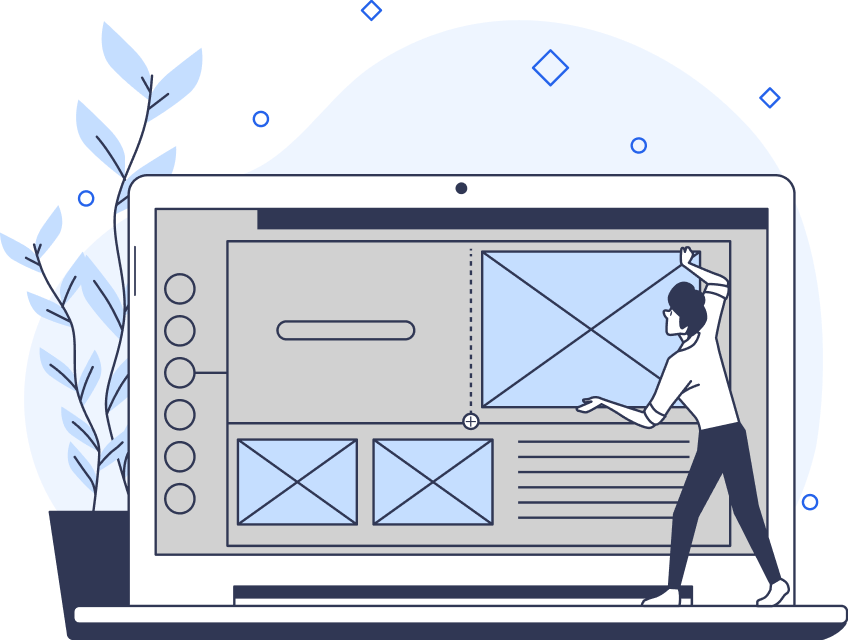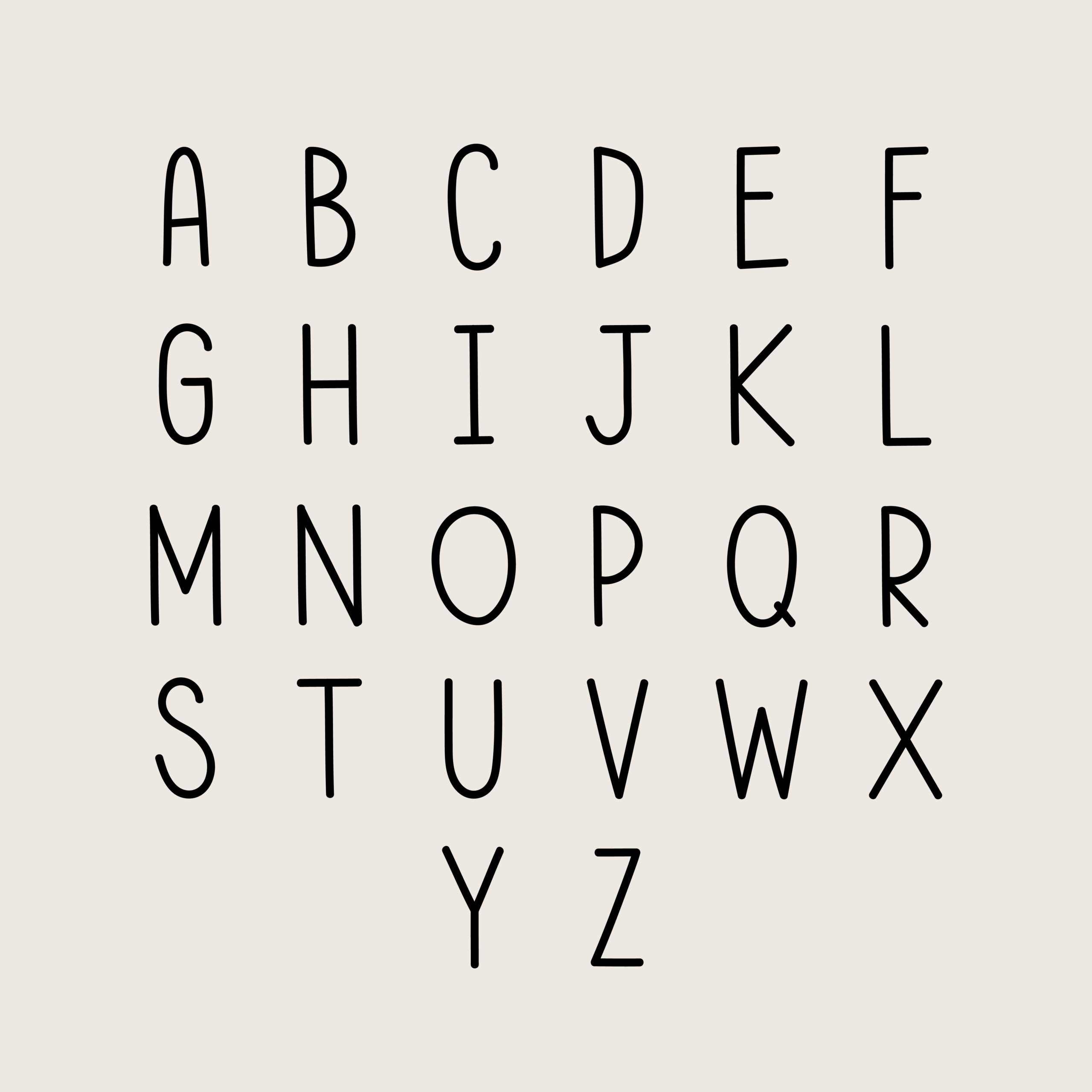Onboarding flows define the quality of user experiences. With the right onboarding flow, you can engage and even expand your target user base.
However, a bad user onboarding experience can blemish your brand’s reputation and lead to significant revenue loss.
For that reason, every UX designer must know how to design exceptional onboarding experiences.
In today’s guide, we’ll reveal how to do just that. We’ll also explore a range of user onboarding examples, both good and bad, to guide your designs.
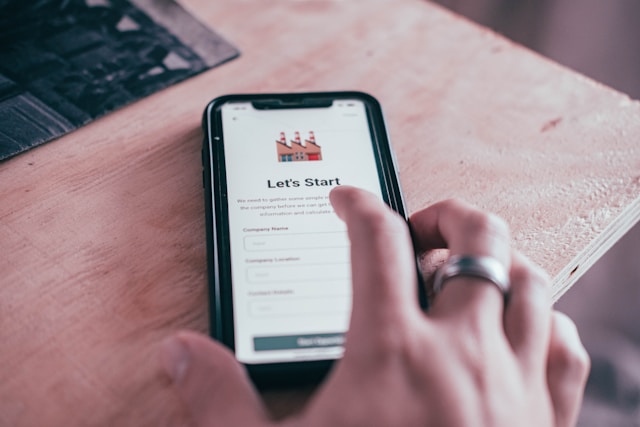
What Is an Onboarding Flow?
Naturally, if you’re unfamiliar with user onboarding, you’re probably wondering, “What is an onboarding flow?”
Onboarding flows are the first stage of the customer journey. This is the stage where users become familiar with your product’s functionalities, resulting in better usability in their following interactions.
In other words, a user onboarding flow is a demonstration of your product’s value and ease of use.
By creating excellent onboarding experiences, you can increase customer retention and conversion rates. You can even reduce your product’s bounce rate and diminish your users’ reliance on customer support.
As you can imagine, every onboarding screen will have slight variations that depend on the company’s goals. For instance, some flows will teach users how to create an account, while others will help users complete in-product actions.
Even the device your user utilizes to complete the onboarding flow will have an impact on how you design it.

Web vs Mobile App Onboarding: Crucial Differences
Many designers believe that creating an onboarding flow for a mobile app also means creating one for a web app. This isn’t the case.
Your mobile app onboarding flows should be different from your web onboarding flows because you have different limitations.
For instance, you have to consider contextual differences that affect the user’s experience.
If your users are using their laptops, they are likely in an environment that allows for better focus. But if they’re using their phones, they are more likely to be in a distracting environment, like a shopping mall.
This means that your mobile app onboarding experiences should be straightforward, concise, and even more engaging.
Another limitation you face is smaller screen real estate. With less space to work with, you need to prioritize the right onboarding elements carefully. Clearly, this differs from web applications, where you have more flexibility to add engaging elements like animations.
Ultimately, you must strike the right balance between helpfulness and user engagement, all while ensuring you create de-cluttered user interfaces.
You must also consider the nature of the user’s interactions. On a computer, the user can click and scroll using a mouse. But on a phone, users can tap, swipe, and pinch the screen using their fingers.
This means you need to adapt your onboarding flow’s navigational aids to suit touch-based user interaction. Think about the way your users hold their phones and design accordingly.
Key Elements of the Best Onboarding Flows
Now, let’s really get into the best onboarding flows and explore their must-have elements.
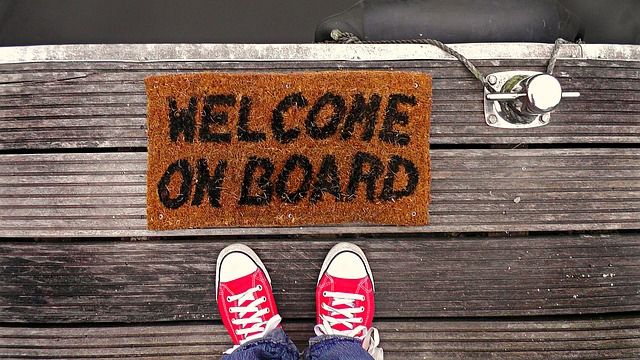
1. Welcome Screens
Your welcome message adds a personal human touch to your user onboarding that will enhance the user’s engagement. By immediately introducing your users to your brand’s personality, you can set the tone for their entire onboarding experience.
Beyond that, your welcome message is a great opportunity to outline your product’s value proposition and how it benefits users.
2. Account Creation
Every good onboarding experience will require its users to set up their personal profiles, and yours should do the same.
This step allows designers to collect data that reveals more about their target demographics and users’ preferences.
Additionally, account creation provides users with access to the product’s core features. What’s more, when users complete this step, they can enjoy more streamlined sign-in flows in the future.
But when it comes to good vs great profile creation, the best onboarding experiences have an additional feature – personalization.
By implementing brief surveys into this stage of the user’s onboarding, you give users the power to customize their experiences. With this data, you can tailor your product’s content to the user’s needs more accurately.
You also make the onboarding experience more unique to that particular user, which drives their engagement with the overall process.

3. Product Tours/Walkthroughs
Product tours guide users through a product, introducing them to its most valuable features and demonstrating how to use them.
Many product teams adopt an incremental approach to tours so as not to overwhelm users with too much information. They also typically deliver these product tours to users via short videos as additional visual assistance.
It’s worth noting that you can also use interactive product tours. The addition of interactivity allows users to experience your product’s value proposition first-hand.
As you can imagine, interactive walkthroughs do wonders for your user engagement and retention rates.
For that reason, we recommend implementing context-relevant, helpful hints and tooltips in your interactive tours. This will encourage your users to explore and discover more of your product’s valuable functions.
Tip: Make it so that users can disable hints and tooltips if they prefer.
4. Progress Indicators
For users, there’s nothing more frustrating than not knowing how long it’s going to take to complete in-product tasks.
If your product lacks progress indicators like a progress bar or checklist and the user is growing impatient, they may abandon it.
Progress indicators instill users with the confidence that their actions are steadily helping them progress toward their goals. This, in turn, incentivizes users to complete the onboarding process.
What’s more, according to a study from CommandBar, 43% of users said onboarding checklists were helpful.
How To Design Onboarding Flows Effectively
It’s time to put those elements into practice; you need to know how to design onboarding flows the right way.
1. Conducting Valuable Research
The best onboarding experiences start with thorough user research.
With UX research methods, you can acquire valuable data that helps you empathize with your user’s needs, expectations, and frustrations. You can then turn these actionable insights into detailed user personas that will contextualize your target users.
With these user personas, you can easily identify and resolve the user’s pain points within your onboarding flows.
You should also conduct competitor research, analyzing their onboarding experience and investigating reviews to uncover what users feel about them.
With the findings from competitor research, you can emulate what works and avoid what doesn’t in your own flows.
2. Mapping Vital Flows
With your research, you can start to map out user flows that detail how different users will approach completing tasks.
The more user flows you have the better; this means you’ve considered how all of your target users achieve goals.
We also recommend creating task flows for more linear, predictable processes like the sign-up process.
By clarifying these flows, you’ll find it easier to spot any moments of friction during your users’ interactions. You’ll also be able to identify the key elements that your onboarding experience will need to resolve these frictions.
3. Creating Your Content
From your flows and research, you know which elements you need to implement to ensure a seamless onboarding experience.
So, the first thing you need to do is find the right onboarding software for your needs. We recommend looking into tools like UserGuiding and Userpilot.
With your chosen tool, you need to start creating the best content using the elements we discussed earlier. Ask yourself the following questions:
- Does my onboarding flow allow for personalization?
- Will my chosen elements incentivize users to complete the onboarding process?
- Is my copy too long or too short?
- Can users set up profiles intuitively and in accordance with their preferences?
- Does my welcome screen convey my brand’s personality effectively?
- Do my designs feature clear progress indicators?
- Will my users benefit more from a video tour or an interactive walkthrough?
- Does the onboarding experience translate effectively to my product’s mobile app design?
4. Implementing Engaging Visuals
With your content in place, you now need to make it engaging with visuals that reflect your brand.
For instance, you could enhance your micro-interactions with animations that appear when the user clicks/taps on them.
You could also use personalized illustrations, icons, and gamification elements like points and achievements to drive visual appeal.
Whichever visual elements you use, make sure to consult the UI design principles (especially the principle of accessibility).
5. Testing & Iterating
Now, you should test specific sections within your onboarding flow and collect user feedback.
With this feedback, you can spot and fix areas of improvement and refine your flows accordingly.
At this stage, you should also monitor your success metrics, like conversion and retention rates. This will help you create exceptional onboarding experiences that benefit your users and your brand.
Creating the Best Web/App Onboarding Flow: Design Tips
Whether you’re working on a web or app onboarding flow, you’ll benefit from the design tips and tricks below.
Always seek out user feedback.
- Keep your flow simple by breaking it down into manageable segments.
- Avoid jargon.
- Assume the users know nothing about your product or brand.
- Reveal crucial information when it’s relevant during the users’ interactions.
- Tailor the onboarding experience to the users’ preferences.
- Employ a strong visual hierarchy.
- Provide helpful resources like forums and FAQs.
- Celebrate your users’ milestones.
- Provide the users with an option to skip or exit the flow.
- Always seek out user feedback.
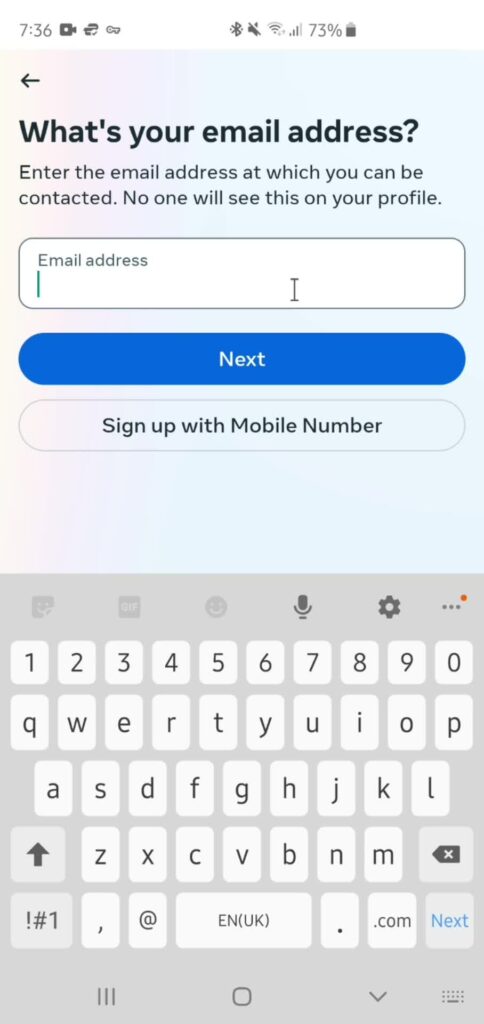
Learning From the Instagram Onboarding Flow
One noteworthy flow is the Instagram onboarding flow. As far as social media app experiences go, Instagram masters onboarding brilliantly.
Instagram takes an incremental approach to onboarding, with each screen dedicated to a singular task, similar to Bard (now Gemini). With concise copy and effective whitespace, this approach makes it so that users won’t become overwhelmed.
Additionally, Instagram showcases its understanding of its users’ needs – to start socializing and sharing immediately. For that reason, Instagram’s onboarding allows users to leverage their Facebook profiles and phone contacts to easily find friends.
In virtually no time, an Instagram user will have a profile, complete with a picture and a recommended friend list.
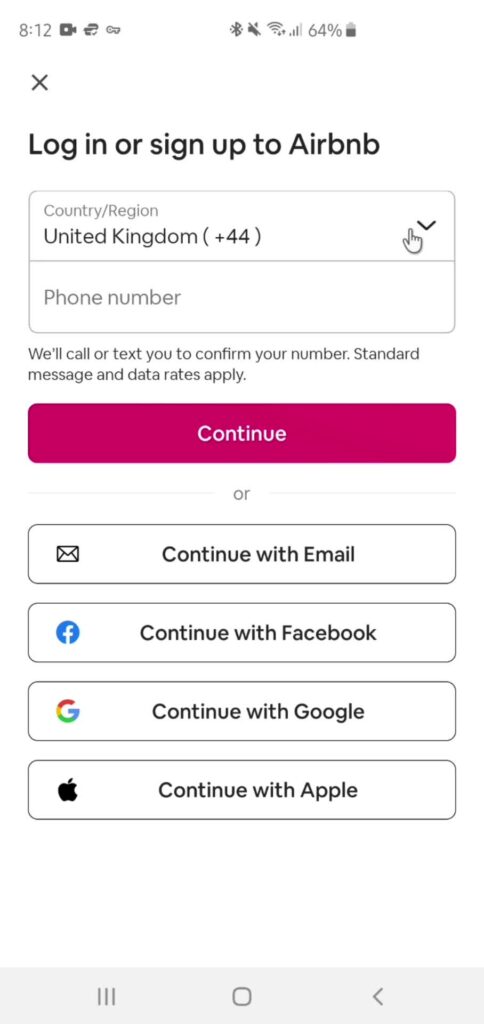
Taking Inspiration From the Airbnb Onboarding Flow
The Airbnb onboarding flow is another great example to learn from. During Airbnb’s sign-up process, the user has multiple ways of signing up, including via Google, Apple, and Facebook.
This addition not only accommodates the users’ preferences but also compensates for the extra steps within the flow.
Speaking of those extra steps, Airbnb requires their users to confirm their phone number via a verification code. This demonstrates Airbnb’s dedication to security, putting their user’s minds at ease.
It also makes future interactions painless, making it easier for guests and hosts alike to contact each other.
More Great App Onboarding Examples
Let’s look at some more excellent mobile app onboarding examples!
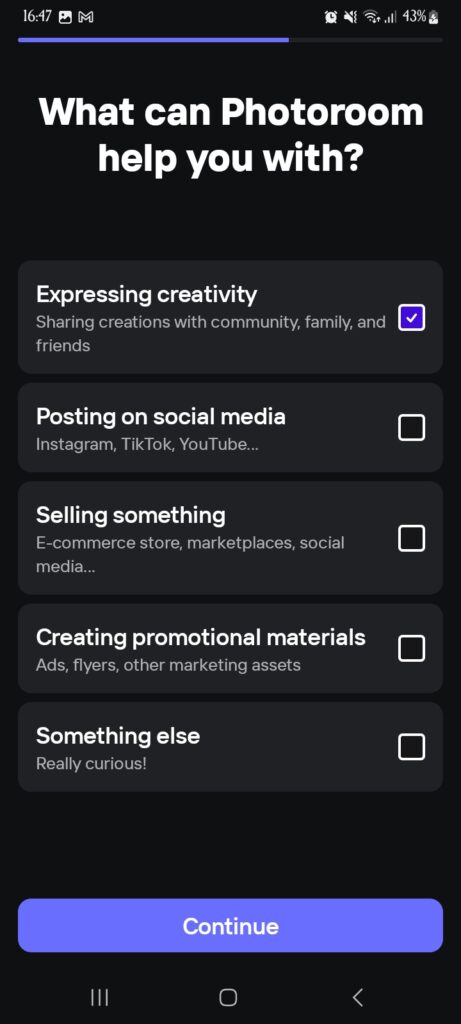
Photoroom
The Photoroom app onboarding process knows that the real goal of onboarding is conversion and retention, not just simple completion.
It has a very brief flow that starts by asking users about what they intend to use their app for. Immediately, this shows users how Photoroom’s first priority is catering to its users’ preferences.
The Photoroom app then asks users to submit a selfie. In mere seconds, Photoroom will send the selfie back to you with its entire background seamlessly removed.
Emphasizing their benefits to the user, you will then see Photoroom’s pricing models. This is a very effective and concise way of incentivizing users to convert.
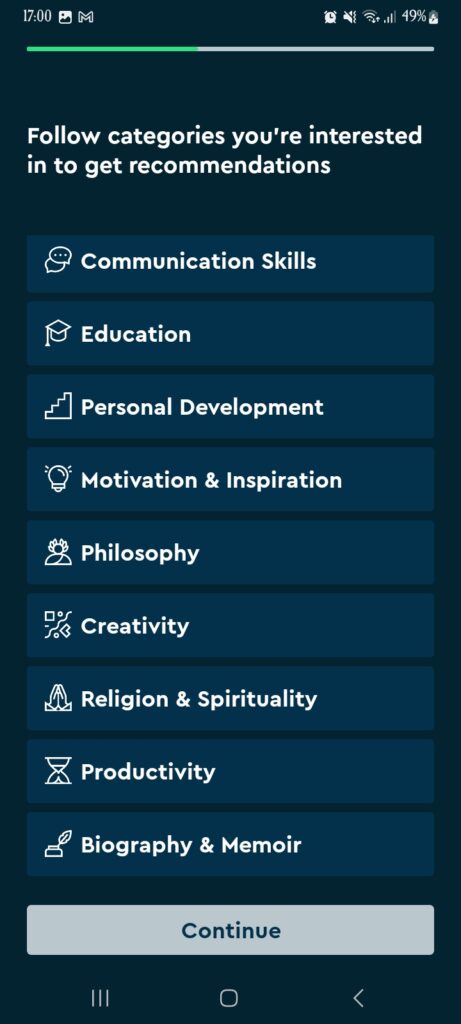
Blinkist
Blinkist’s app is a perfect onboarding example when it comes to personalization.
Blinkist’s onboarding flow starts by asking about the users’ goals and interests, helping them produce relevant, personalized recommendations.
With this data, Blinkist will then send the user several books based on their selections. To add a casual, familiar touch to the app, Blinkist’s designers allow users to swipe through recommendations like Bumble.
Ultimately, personalization, familiar UI design, motivational copy, and colorful progress indicators are what make Blinkist’s onboarding exceptional!
Learning What Not To Do: Bad Onboarding Flow Examples
Here are some onboarding flow examples that you can use to learn what not to do in your own flows.
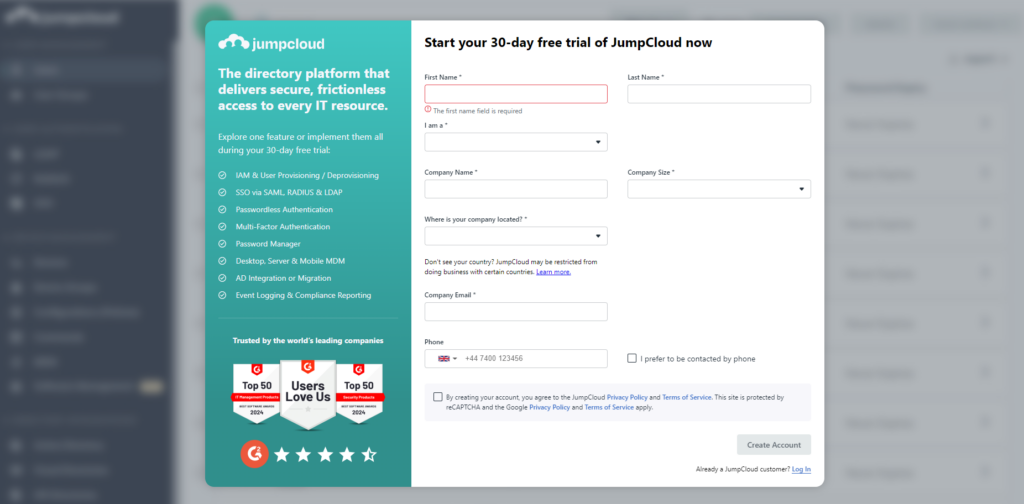
JumpCloud
JumpCloud loses points for its sign-up flow during its onboarding process.
This step in the onboarding experience appears as a large pop-up window rather than an entire screen. Although the background is obscure, it only adds to the visual clutter and may distract users from the sign-up process.
Additionally, the pop-up window itself comprises a lot of unnecessary information (for this stage) that may overwhelm users.
However, the biggest pitfall of this sign-up flow is that it only allows for SSO (single sign-on). For users who prefer to sign in to their accounts via Google and Facebook, this isn’t an option with JumpCloud.
Not only does this disregard users’ preferences, but it lengthens the sign-up process.
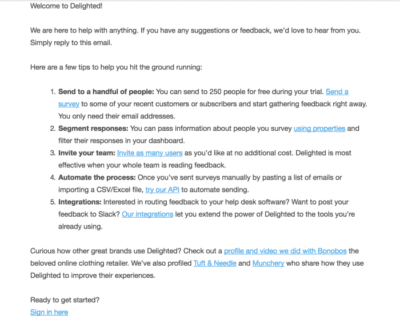
Delighted
Where Delighted weakens their user onboarding experience is in their onboarding emails.
This email contains a lot of content that is quite overwhelming when – ideally – it should be short and sweet. What’s more, Delighted’s designers could’ve conveyed this information more helpfully to the user with an interactive product tour.
Beyond this, the copy doesn’t actually detail how Delighted’s product would help you collect actionable customer feedback.
This, along with the excessive number of links, is what makes Delighted’s onboarding email lack user-centricity.
FAQ
What are onboarding flows?
An onboarding flow allows users to familiarize themselves with a product’s features and navigation upon their first interaction.
What are the four levels of onboarding?
The four levels of onboarding are as follows:
– Level 1: Pre-onboarding
– Level 2: Orientation (welcoming new hires to the company)
– Level 3: Integration (employee training and introduction to new co-workers)
– Level 4: Transition (the end of the training process)
How do I design a good onboarding flow?
Start with thorough user/competitor research and use your findings to map user flows. Choose your onboarding’s screen content based on your findings and design with visual engagement in mind. Then, test and refine your flows accordingly.
What is the onboarding flow of signups?
The onboarding flow of signups refers to the steps users take to create a profile for a product or service.
Onboarding Flows: Give Users a Great Experience With the Help of Page Flows
When creating onboarding experiences, the main thing is that you always consider what will help users complete the process. Always design with user-centricity as a top priority.
Speaking of user-centricity, why not learn what happens when a product team implements it effectively? Meet Page Flows.
With Page Flows, you can leverage our helpful resources – thousands upon thousands of user flow recordings and screenshots.
We source essential user flows like onboarding and signing up from popular industries and reputable brands like Apple and Amazon.
Like onboarding flows, our resources are the start of your next – and greatest – digital products.
Get started today to learn what seamless in-product navigation looks like!


